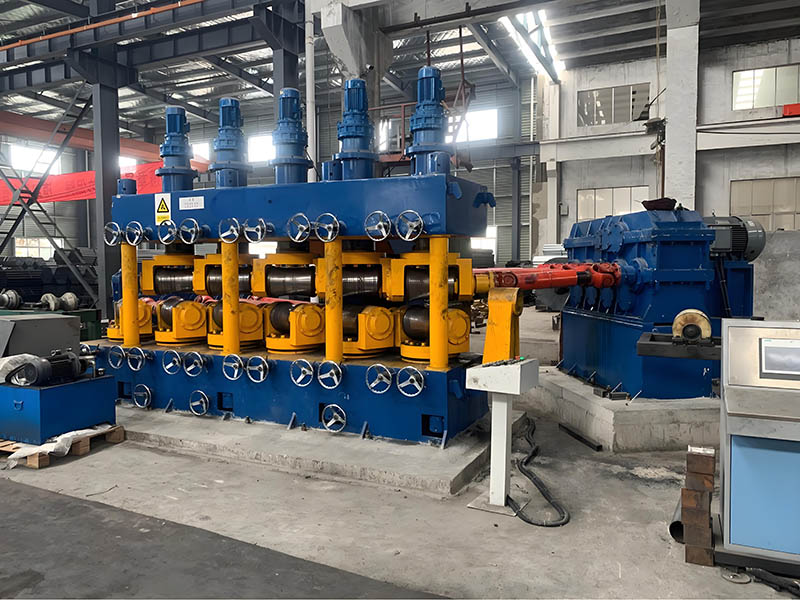- Essential Maintenance and Refueling Guide for Centerless Grinders
- Essential Maintenance and Refueling Guide for Centerless Grinders
- Essential Maintenance and Refueling Guide for Centerless Grinders
- Steel Peeling Machines: Advantages and Applications
- Why Choose Mingcheng Peeling Machine? Boost Production Efficiency and Create Dual Profits
- Metal Materials and Their Development Trends
E-mail:liu@mingchenggroup.com
Phone:+86 13322202758
QQ:605712576
Address:No. 20, Gangwan Street, Zhongshan District, Dalian City, Liaoning Province
Tension Levelers: Advanced Straightening Solutions
Tension levelers, also known as stretching and bending levelers, are advanced straightening machines designed to meet the high demands for strip straightness in various industries. By combining the advantages of both roller straighteners and traditional tension levelers, these machines significantly enhance the quality of plate shapes. They are capable of eliminating common three-dimensional defects such as scooping, edge waves, and sickle bends, all while achieving precise straightening through a combination of tension roller stretching and bending roller action. Whether you're looking to improve the shape of your strips or enhance production efficiency, our selection of tension levelers offers a solution tailored to your needs.


The working principle of tension levelers involves a combination of roller straightening, tension straightening, and stretch bending straightening. In roller straightening, the plate undergoes elastic-plastic deformation under the pressure of straightening rollers. The material is bent, with the neutral layer (zero-stress axis) maintaining alignment with the strip’s geometric axis, which is most effective for thinner materials. Tension straightening, on the other hand, applies uniform tensile stress across the strip, causing consistent plastic elongation and eliminating defects like curvature. Stretch bending combines the benefits of tension and roller straightening, applying tension while bending the strip under alternating actions to eliminate shape defects and flatten residual curvature.


The stretch straightening machine consists of two key components: the tension roller group and the stretch bending machine base. The tension roller group is responsible for applying the required tension to the strip, with rollers arranged in an S-shaped distribution at the entrance and exit points. These rollers create a difference in linear speed, generating the necessary tension. The stretch bending machine base includes a bending roller unit and a straightening roller unit. The bending rollers, usually small in diameter, repeatedly bend the strip under tension, inducing plastic elongation, while the straightening rollers remove any remaining curvature, ensuring a perfectly flat product.


At Mingcheng, we offer a range of tension levelers and other metal straightening machines designed to meet your unique production needs. Whether you need a machine for precise straightening, tension control, or to address specific material defects, our custom solutions are built to improve your production efficiency and product quality.
Contact us today to discuss your requirements and explore our selection of advanced straightening machines. We provide tailored solutions to ensure the best performance for your metal processing operations. Let us help you achieve the highest quality and precision with our metal straightening equipment.
- Previous:CNC Sawing Machines: Revolutionizing Precision Cutting
- Next:Lathes vs Milling Machines: Turning vs Milling
-
2023-09-19How The Round Steel Peeling Machine Works?
-
2023-09-19Round Steel Peeling Machine





